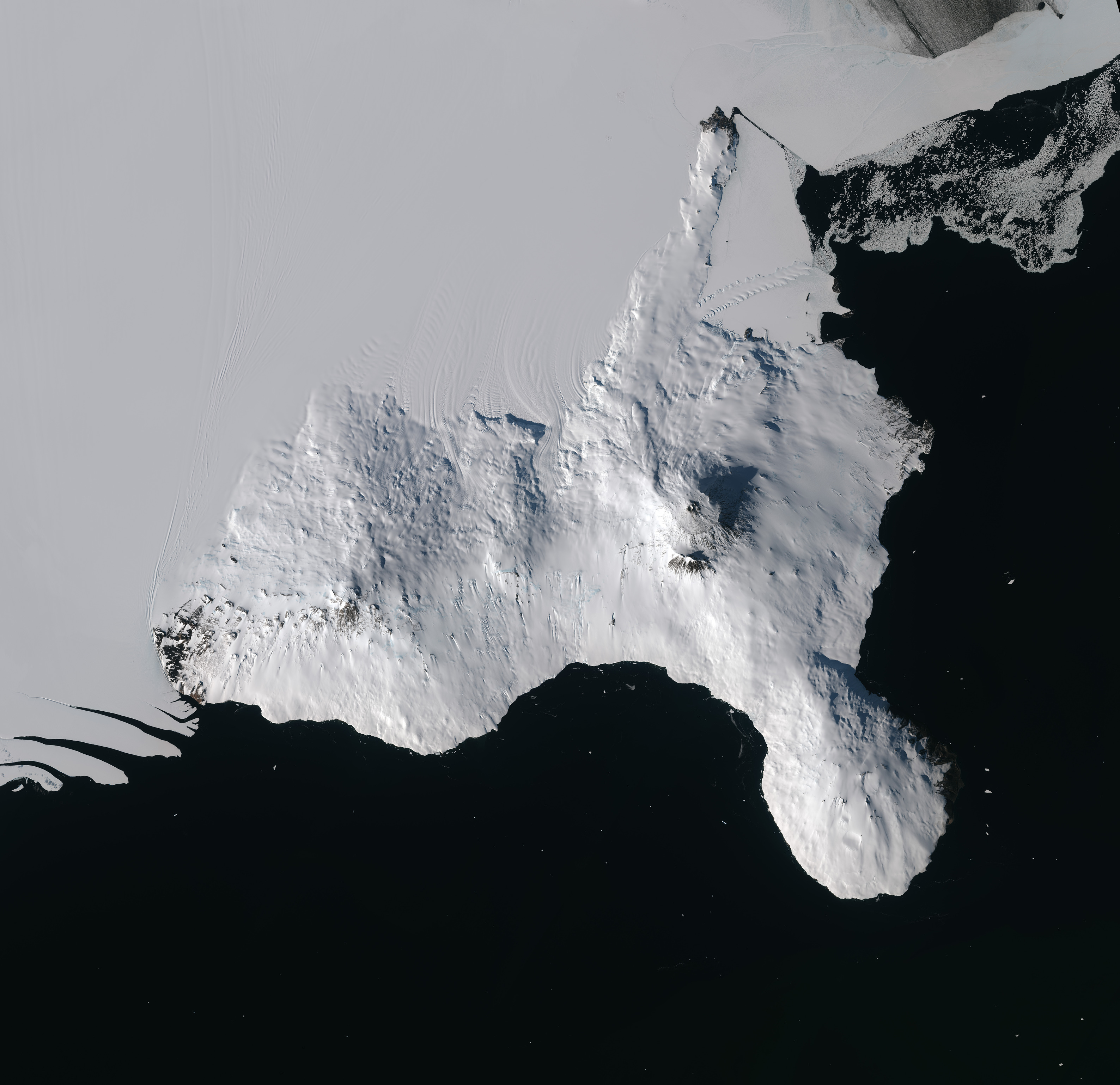Il paesaggio ghiacciato dell'isola di Ross in Antartide è mostrato in questa immagine ripresa da Copernicus Sentinel-2 il 3 febbraio 2024, durante l'estate australe.
Basandosi sull'orientamento dello scenario il Polo Sud geografico si troverebbe a circa 1350 km dalla parte superiore dell'immagine.
L'isola di Ross, che ha una superficie di circa 2460 kmq, si trova nell'Antartide orientale ai margini della vasta Piattaforma di ghiaccio di Ross, una piccola parte della quale è visibile in alto nell'immagine. L'isola prende il nome dall'esploratore britannico Sir James Clark Ross, che la scoprì nel 1841 durante la sua ricerca del Polo Sud magnetico.
L’isola è formata da quattro vulcani: il Monte Bird, il Monte Terra Nova, il Monte Terror e il Monte Erebus. Nell'immagine ne sono chiaramente visibili due: il Monte Terror è quello a sinistra ed il Monte Erebus - il più grande - è quello a destra.
Anche se il suo nome suggerisce il contrario, il Monte Terror non è così inquietante come potrebbe far pensare. Sir James Clark Ross battezzò sia il Monte Terror che il Monte Erebus in onore delle sue navi della spedizione del 1841, la HMS Terror e la HMS Erebus.
Monte Erebus è ancora attivo e si ritiene che sia il vulcano attivo più meridionale del mondo. Con i suoi 3276 m è la vetta più alta dell'isola ed è anche uno dei pochi vulcani al mondo che contengono un lago di lava attivo. La caldera forma un altopiano sulla sommità del vulcano, dove si possono osservare due crateri. Mentre il cratere più piccolo è inattivo, il cratere principale contiene un cratere interno più piccolo, dove si trova il lago di lava.
I bordi frastagliati della lingua di ghiaccio dell'Erebus possono essere osservati estendersi nella baia di McMurdo. La lingua di ghiaccio è la parte frontale di un ghiacciaio che si origina dalle pendici del vulcano.
L'isola di Ross è anche uno dei centri di ricerca scientifica più importanti dell'Antartide. Sia la stazione statunitense di McMurdo che la base Scott della Nuova Zelanda si trovano sulla estremità della lunga e stretta penisola di Hut Point, visibile nella parte superiore dell'immagine.
Scarica immagine MedRes (9,79 - .JPG)
Scarica immagine HighRes (118,22 GB - .TIF)
---
Ross Island, Antarctica
The icy landscape of Ross Island in Antarctica is featured in this Copernicus Sentinel-2 image from 3 February 2024, during the austral summer.
According to the orientation of the image, the geographic South Pole would be around 1350 km from the top of the image.
Ross Island, covering around 2460 sq km, lies in Eastern Antarctica at the edge of the vast Ross Ice Shelf, a small fraction of which is visible in the upper part of the image. The island was named after the British explorer Sir James Clark Ross, who discovered it in 1841 during his quest for the magnetic South Pole.
Four volcanoes form the island: Mount Bird, Mount Terra Nova, Mount Terror and Mount Erebus. Two can be seen clearly in the image: Mount Terror is on the left and Mount Erebus, the largest, is on the right.
Though its name suggests otherwise, Mount Terror is not as ominous as it might sound. Sir James Clark Ross named both Mount Terror and Mount Erebus after his ships, the HMS Terror and the HMS Erebus, of the 1841 expedition.
Mount Erebus is still active and is thought to be the southernmost active volcano in the world. Standing at 3276 m, it is the tallest peak on the island and is also one of a few volcanoes in the world that contain an active lava lake. The caldera forms a plateau at the summit of the volcano, where two craters can be spotted. While the smaller crater is inactive, the main crater holds a smaller, inner crater where the lava lake is located.
The jagged edges of the Erebus ice tongue can be seen stretching out into McMurdo Sound. The ice tongue is the forefront of a glacier that originates from the volcano’s slopes.
Ross Island is also one of Antarctica’s most important centres for scientific research. Both the US McMurdo Station and the New Zealand Scott Base are at the extreme tip of the long and narrow Hut Point Peninsula, visible in the upper part of the image.
[Credits: contains modified Copernicus Sentinel data (2024), processed by ESA - Translation: Gianluca Pititto]




